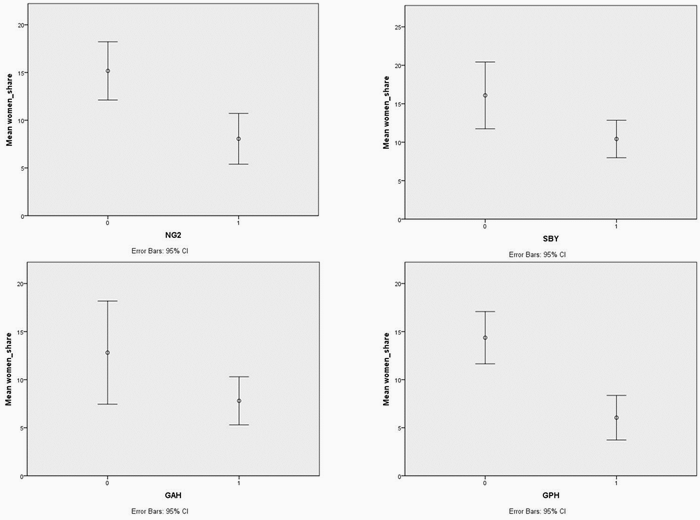In his Nobel Prize lecture, Douglass North (1993) argued that cultural knowledge is transmitted via language. Yet, language may be more than a vehicle of transmission, as the linguist Benjamin L Whorf hypothesised (1956):
“We are inclined to think of language simply as a technique of expression, and not to realise that language first of all is a classification and arrangement of the stream of sensory experience which results in a certain world-order, a certain segment of the world that is easily expressible by the type of symbolic means that language employs.”
Forefront research in evolutionary linguistics and cognitive science suggest that language is indeed the result of biological and cultural historical forces (Christiansen and Kirby 2003) and that it may influence cognition (Boroditsky et al. 2003).
If language captures speakers’ worldviews and/or influences their cognitive framework it may influence their decision-making processes as economic agents as well. What does the evidence tell us? Is the way we speak economically relevant?
While aspects of language such as vocabulary and slang may evolve rapidly as a result of socioeconomic forces and migration flows, in this column we analyse the most enduring feature of language, i.e. grammar. The grammatical features of a language are inherited from the distant past (thousands of years). Among the almost 200 grammatical features classified by linguists (The World Atlas of Language Structures) we study the most stable one, i.e. gender (Wichmann and Holman, 2009).
Female/male distinctions in grammar
We analyse the impact of grammatical gender on gender-related socio-economic outcomes. Gender economics is an area of research where economists argue that culture, understood by economists as social conventions but also individual preferences and beliefs (Tabellini 2008), plays an important role (Fernandez 2010; Alesina et al. 2011).
In linguistics, a grammatical gender system is defined as a set of rules for agreements that depend on nouns of different types. These can be based on biological sex (female and male) but also on other social constructs such as age or social status.
We rely on the most comprehensive data source of language grammatical structures, the World Atlas of Linguistic Structures (WALS; Dryer and Haspelmath, 2011) and use all four grammatical variables related to gender. These four variables include the number of genders in the language, whether the gender system is sex-based, rules for gender assignment and gender distinctions in pronouns, and are all classified as very stable features of language (Wichmann and Holman 2009).
- Number of Genders captures how many genders are present in the language. A language with two genders, like French, typically implies feminine versus masculine, while a language with three or more genders may include neuter as the third gender, like German, or non sex-related distinctions.
- Sex-Based captures whether the gender system is linked to biological sex. For example, Zulu, Swedish and Danish are languages with a gender system that is not sex based.
- Gender-Assignment captures the rules speakers use to assign nouns to the genders defined by the gender system of the language. Assignment can depend on the meaning of the noun (semantic) or its form. For example, English assigns gender based on semantic grounds only while Spanish uses semantic and formal assignment rules.
- Gender-Pronouns captures the gender distinctions in independent personal pronouns, which can be made in third-person pronouns and in the first and/or the second person. For example, English distinguishes gender in third-person pronouns only.
Based on these features we construct four individual dummy variables (Figure 1) capturing the intensity of female/male distinctions and an index, the Gender Intensity Index, which equals their sum, for the most commonly spoken language in a country.
Figure 1. Distribution of individual intensity indices
Note: Countries in black are those whose dominant language gender variable is female/male intensive.
Female labour force: Participation and occupational choices
In Santacreu-Vasut and Shoham (2012) we find that countries whose dominant language marks gender more intensively have significantly lower female labour-force participation rate. We also find that, relative to men, women in those countries work more in services, and less in agriculture. These are robust to controlling for geography, colonial history, religion, and climate.
For example, having a sex-based gender system decreases female labour-force participation by 12% points compared to having no gender system, ceteris paribus. On the contrary, having a gender system based on other distinction then sex – such as animate/inanimate, age or social status – increases female labour-force participation by three percentage points compared to having no gender system.
Female political participation and gender political quotas
We also find that female/male distinctions in language are related to gender political quotas, one of the main determinant of female political participation today (Tripp and Kang 2008). According to Duflo (2011), quotas are needed to increase female political participation: "Perceptions are biased, in the absence of affirmative action of some sort, it would be very difficult for women to break into politics."
In particular, countries whose dominant language emphasises female/male distinctions more intensively are more likely to formally regulate women's presence in politics through the use of quotas and sanctions for their enforcement. Furthermore, those countries show a sharper increase in female political participation ex post quota adoption. Our findings are robust to controlling for colonial history, religion and geography.
In Shoham et al. (2012), we analyse the timing of quota adoption and find that these countries are more likely to be early adopters between 1971 and 2011. To understand the mechanisms beyond these results, we analyse female political participation in the 1980s when affirmative action was non-existent. As Figure 2 shows, high female/male distinctions in language, captured by our four different dummies being equal to one, is correlated with relatively lower female political participation, suggesting that these are countries where corrective action was more needed and indeed implemented.
Figure 2. Female/male distinctions in language and political participation
Conclusion
As Borodistsky et al. (2003, p. 65) argue:
“Needing to refer to an object as masculine or feminine may lead people to selectively attend to that object's masculine or feminine qualities, thus making them more salient in the representation. This salience in the grammar of languages may influence the salience of gender in speakers' mind (cognition) and/or may reflect the salience of gender distinctions in the culture.”
As our evidence shows, the intensity of female/male distinctions in the language relates to female labour-force participation, labour-market discrimination, quotas for female political participation, and potentially to a vast array of female economic choice and the constraints they face.
Identifying whether language matters because it reflects our ancestors’ culture or influences our cognitive framework and formation of stereotypes and categorisation of the social environment is a challenging avenue for future research. Since migrants travel with their language, the study of their economic decisions and language may be a fruitful avenue in the future to pursue the study of these fascinating questions. Their potential applications span, indeed, a vast array of fields such as economics, sociology, political science and linguistics.
References
Alesina, A, Giuliano, P and Nunn, N (2011). "Fertility and the plough", American Economic Review, vol. 101(3), pp. 499-503.
Boroditsky, L, Schmidt, L, and Phillips, W (2003). "Sex, syntax, and semantics", in (D. Gentner and S. Goldin-Meadow (ed.), Language in Mind: Advances in the Study of Language and Cognition, MIT Press: Cambridge, MA.
Christiansen, M H and Kirby, S (2003). "Language evolution: The hardest problem in science?", in (M. H. Christiansen and S. Kirby ed.), Language Evolution: The States of the Art, Oxford University Press: Oxford.
Dryer, M S and Haspelmath, M (eds) (2011) The World Atlas of Language Structure, Max Planck Digital Library, Munich.
Duflo, E (2011), "Women Empowerment and Economic Development", NBER Working Paper 17702.
Fernandez, R (2010), `Does Culture Matter?', NBER Working Paper 16277.
North, D C (1993). "Douglass C. North Prize Lecture".
Santacreu-Vasut, E and Shoham, . (2012) Language and Gender Socio-Economic Outcomes, Working Paper.
Santacreu-Vasut, E, Shoham, A and Gay, V (forthcoming), "Do Female/Male Distinctions in Language Matter? Evidence from Gender Political Quotas", Applied Economics Letters.
Shoham, A., Gay, V. and Santacreu-Vasut, E. (2012), "Why do Countries Adopt Gender Political Quotas? Language and Female Political Participation", Working Paper.
Tabellini, G. (2008a). "Presidential address institutions and culture", Journal of the European Economic Association, vol. 6(2-3), pp. 255-94.
Tripp, A M and Kang A, (2008), "The Global Impact of Quotas", Comparative Political Studies, vol. 41(3), pp. 338-61.
Whorf, B L (1956). "The punctual and segmentative aspects of verbs in Hopi", in Language, Thought and Reality: Selected Writings of Benjamin Lee Whorf, MIT Press: Cambridge, MA, pp.51-52.
Wichmann, S and Holman, E W (2009). "Assessing temporal stability for linguistic typological features", Munchen: LINCOM Europa.







